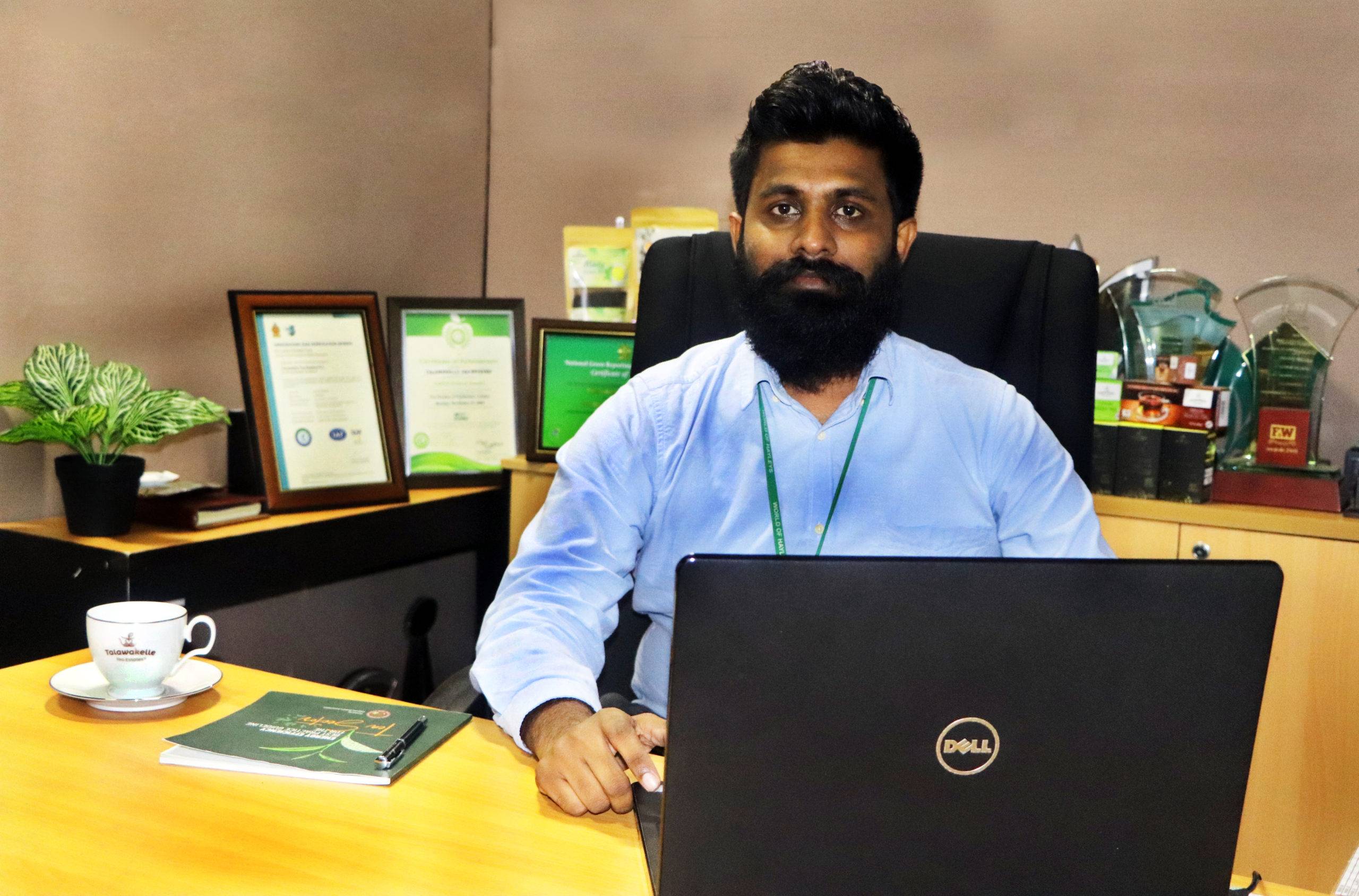
“In Conversation”
with BSL’s Focal Point from Talawakelle Tea Estate PLC, Krishna Ranagala, Manager, Sustainability & Quality Systems Development on the company’s moves towards sustainability in the tea plantation sector and future hopes.
Q: iCan you tell us about your organization?
A: Talawakelle Tea Estates PLC is a Regional Plantation Company, producing some of the finest teas in Sri Lanka. 6,491 hectares of plantations spread across the high grown and Low grown regions of the country, produce 5.93 million kilograms of tea, and accounts for over 2.1% of national tea production. With a portfolio of 16 estates and 14 factories, it ranks at the top for premium tea prices amongst the other plantation companies.
Q: What drives your sustainability agenda and what are the key focus areas?
A: Our company has a deep-rooted legacy in driving sustainable growth. We are a trailblazer within the industry as we lead conversation action on sustainable agriculture practices, conservation of the environment, and human welfare. This culture has been ingrained into the way we function as a result of the Board and senior management, and the remainder of the employees, understanding the need for long-term value created without compromising on the needs of others.
One of the key areas of focus in our sustainability agenda is our people. Our estates employ a workforce of 4,832 and are home to a resident population of over 42,000 people. We heavily invest in ensuring the socioeconomic progression of this entire population.
Given the fact that our business model is heavily dependent on utilizing natural resources, and that our estates are a part of sensitive natural systems, in order to make sure that we are able to continue to create positive gains for ourselves, it’s important that we minimize our negative impact on the natural environment.
Q: Give us an outline of your current sustainability initiatives
A: “Home for Every Plantation worker” is our flagship project for community development. Through this project, for 15 years now, we have driven the socioeconomic progression of our estate community under four pillars. Firstly, we improve their living environment by developing infrastructure facilities including roads, housing, water and sanitation, recreation and learning facilities. The second pillar, community capacity development, is focused on providing financial assistance and strengthening their financial management skills. Thirdly, we raise awareness on nutrition, provide access to better food, and prevent communicable and non-communicable diseases. Lastly, we implement youth development program to build their skills and competencies for them to achieve their life goals and aspirations.
In order to ensure our environmental sustainability, we are focused on converting our business model to one that is low-carbon. To this end, we increase our dependence on renewable forms of energy, with a focus on generation of solar and hydro power. We also undertake the restoration and preservation of ecosystems through dedicated tree planting programs and establishing buffer zones. Through these initiatives, and others, we strive to minimize the negative impacts of our business on the environment, while at the same time, increasing our resilience in facing the threats from environmental phenomenon such as climate change and extreme weather events.
Q: What are your company’s key achievements in the sustainability domain and the reasons behind its success?
A: Under the Home for Every Plantation worker program, in the year 2021/22 alone, we dedicated over Rs. 105 Mn to uplift the quality of life of the local community and ensure better access to facilities. The St. Clair ecosystem restoration project, which is in its third year, has seen a total of 18,138 plants being planted, with a majority of them being native varieties. Our climate action agenda has also marked a significant milestone this year. We are the first company in Sri Lanka to have our GHG emission reduction goals and targets validated and approved by the SBTi. These successes are mainly attributable to the power of our people. Our top management sets the tone for sustainable value creation and provides general strategic oversight. This direction, then trickles down to our people at all levels.
Q: What are the challenges you foresee in driving your sustainability agenda forward in the current, extremely volatile business context?
A: Policy uncertainty is a definite challenge. While we do advocate for measures such as increased worker earnings and organic material sourcing, we believe that such plans should be implemented systematically, and with due care for the concerns of all stakeholders. Otherwise, they result in the opposite of the desired effect. This in turn affects the ability for companies such as ours to contribute to the growth of our dependents as it impedes our own growth.
Sustainability, of course, cannot be achieved alone. A good financial arm is required. Economic indicators such as increasing costs, the forex crisis and interest rates, however, heavily impact our ability to make the financial commitment needed to drive our sustainability agenda forward.
Q: Any interesting future plans
A: In the future, we will continue to work on these initiatives and expand on creating shared value for our people and the environment while sustaining our own growth in the face of growing challenges. We hope to do so by leveraging on our strong systems of management processes.
Q: Have you any messages to our members aspiring to become leaders in Corporate Sustainability?
A: The corporate sector plays a huge role in driving the journey towards a sustainable future. For everyone who aspires to work in corporate sustainability, therefore, there is a vital task at hand. But working for the planet and for the people will bring definite benefits both for the companies we work in and for ourselves. Working in a corporate sustainability role is also sure to bring many challenges from within organizations including cultural challenges and the lack of resources. But as people who are truly committed to transforming the world into a better place, it is important that we remain steadfast and remain true to our own beliefs, and continue to do good.

This Month we celebrated the International Day of Biological Diversity on the 22nd of May…
Sri Lanka supports unusually high biodiversity compared to any other moderate-sized tropical island. The hallmark of Sri Lanka’s biodiversity is signified by the presence of large populations of mega fauna (Asian elephant, leopard, sloth bear etc.,) that do not occur in other moderate sized islands, as well as the presence of a large proportion of endemic species (species that are naturally found only in Sri Lanka). Therefore Sri Lanka, along with the Western Ghats of India, is listed as one of the 34 biodiversity hotspots of the world. Designation of a biodiversity hotspot is based on two criteria, presence of 0.5% or 1500 species of vascular plants as endemics and reduction of forest cover by 70% or more causing many of the taxa to become threatened with extinction. Designation of Sri Lanka as a biodiversity hotspot is based on both of these criteria as there is a high level of endemicity in most taxonomic groups and a high proportion of the species in most taxonomic groups are threatened with extinction, especially in the case of endemic species, primarily due to loss of habitat.
Loss of biodiversity will lead to loss of goods and services provided by the biological resources as well as loss of resilience of natural ecosystems to withstand changes in the environment, especially the predicted changes that are brought about by climate change. This in turn will have a significant impact on human wellbeing and livelihoods such as agriculture and fisheries that directly depend on these ecosystem services. Further, Sri Lanka plans to expand its tourism industry which heavily depends on the natural capital whose loss will reduce the attractiveness of Sri Lanka as a tourism destination. Loss of biodiversity will also have an impact on future benefits that can be accrued from biological resources such as development of new drugs and improving crop varieties using emerging innovations of biotechnology.
In the universe are billions of galaxies,
In our galaxy are billions of planets,
But there is OnlyOneEarth.
Let’s take care of it.
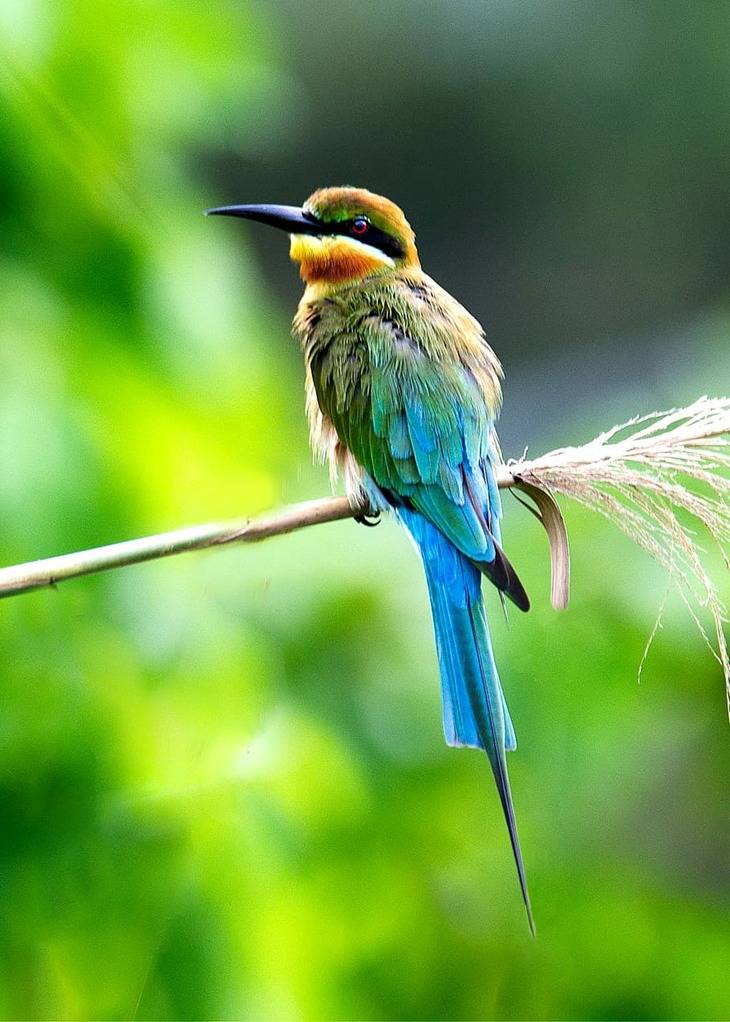
The mesmerizing migratory – Blue-Tailed Bee Eater (Merops phillippinus) නිල්පෙඳ බිඟුහරයා
World Migratory Bird Day was celebrated internationally on 14th May 2022. We celebrated with Mr Sarinda Unamboowe, well known wildlife enthusiast, bird photographer and former Director of BSL, talking to us about our feathered friends that fly to warmer climes for winter and then return home to breed. If you missed it, you can watch on:
https://fb.watch/c-94DFuBfw/
Every year, many bird species move thousands of kilometers. Migration is driven by the availability of food sources and more pleasant weather patterns. Places, where there is plenty of food and birds, may securely build nests. Flyways are the flying pathways that birds use during their annual migrations. A bird’s navigational ability is remarkable, while Scientists are not entirely sure how birds navigate their flyways.
Sri Lanka, a tropical island with various ecosystems, supplying yummy food for these tired travelers, making our country a favorite destination year-round stop for migrating birds.
While the number of migrants expected on our beaches is large, the arrival of the colorful and noticeable species marks the start of the “migration season.” Brightly colored bee-eaters are one of the most intriguing groups of birds among them. They may be found in most of the island’s national parks and bird sanctuaries. Their brightly colored feathers attract the attention of bird watchers.
The Little Green Bee Eater, Chestnut Headed Bee Eater, and Blue Tailed Bee Eater are the only three notable species of bee-eaters found in Sri Lanka.
The migratory Blue-tailed Bee Eaters are lovely to look at, with rich shades of blue and green, and gold on their plumage. They visit us from their breeding grounds in Southeast Asia. They don’t usually nest in trees. Instead, they build colonies on the sides of rivers or in open flat areas. They dig a long tunnel into which they lay approximately 5-7 white eggs.
They’re also known as the “Blue-cheeked Bee-eater” in various regions of the world. A thin blue patch with a black eye stripe and a yellow and brown throat are key distinguishing features on its face. The tail has a stunning iridescent blue color. It has two extended middle tail feathers and can grow to be 23-26 cm long. Both sexes are similar.
The majority of blue-tailed bee-eaters migrate, while small groups settle in the southeastern coastal area as permanent inhabitants. They inhabit the eastern shore of the island, from Bundala to Pottuvil. They may be seen in every corner of the island during the migratory season.
They are expert hunters. Bees, wasps, hornets, and dragonflies are among the insects they consume. Bird enthusiasts can enjoy seeing them demonstrating their aerial dexterity by snatching insects in mid-flight. Their magnificent aerial attacks provide wildlife photographers with a fantastic chance.
They detoxify wasps or bees before eating them. Surprisingly, this little bird can consume roughly 250 bees every day.
Sand bathing is something that bee-eater flocks do practically any day of the year. This is a necessary activity for bee-eaters, who appear to like the sensation of dust on their feathers. It is an attempt to clear their body of parasites.
As social creatures, they frequently appear in groups. Bee-eaters have a sophisticated social system. Many species show monogamy. The couples are highly attached and have been together for many years. Most bee-eater species share this remarkable habit known as courtship feeding. The male collects the prey and feeds his partner during courting.
Let’s ensure that we conserve our habitats so that these much-awaited visitors can enjoy our beautiful island!
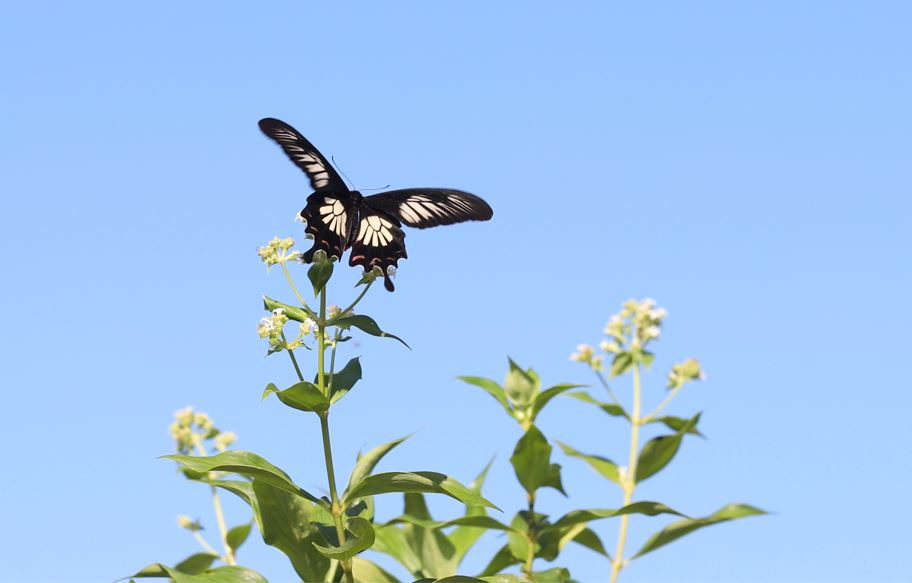
The story that butterflies tell you about ecological restoration….
Our LIFE Journey began four years ago in February 2018 with ten private sector companies partnering with Biodiversity Sri Lanka for restoration of a 10ha degraded forest land located in the Kanneliya Forest Reserve under the able guidance of IUCN and the Forest Department.
From trees…
After years of astute planning and rigorous implementation and monitoring, despite multiple challenges, the Project has shown remarkable progress in restoring this land. At the end of the fourth year of restoration, over 18,000 plants have been grown at the site from 46 plant species including Hora, Wal Del, Bata Domba, Alu bo, Naa, Pelan, and Diyapara. Some of the native shrub species (Maha bovitiya – Melastoma malabaricum and Veraniya – Hediotis fruticans) have emerged naturally in the site after the systematic removal of the invasive Kekilla. Also, the exotic species Alstonia (Alstonia macrophylla) has been observed alongside native shrub species. Despite, Alstonia being an invasive plant, for another couple of years, the Alstonia plants will be maintained to obtain shade and to increase the soil carbon level in the site. Some of the naturally occurred pioneering species include Milla, Kekuna, Kenda, and Geduma.
To butterflies…
Above all, one significant indication that the Project is heading in the right direction is the colonization of butterfly species at the restoration site. Lomove et al (2006) conclude that butterflies are a good indicator species to assess the progress of the ecological restoration. The comparison on the presence of butterfly species before restoration commenced and after four years of restoration is astounding. The biodiversity survey which was done before restoration work commenced in 2017 showed no records of butterflies at the site itself whilst 14 species of butterflies were recorded from the adjacent forest control plot. Nevertheless, a recent biodiversity survey has recorded 22 butterfly species at the restoration site. This remarkable development can be attributed to multiple reasons including the change in the habitat structure from a fern land to a shrub forest and the natural regeneration of plant species such as Weraniya and Maha Bovitiya.
Butterfly Species recorded at the restoration site were Tailed jay, Five bar swordtail, Bluebottle, Crimson rose, Blue Mormon, Ceylon birdwing, Lemon emigrant, Mottled Emigrant, and Jezebel. Three-spot grass yellow, One-spot grass yellow, Psyche, Tawny costor, Tree nymph, Grey pansy, Tree nymph, Chocolate soldier, Gladeye bush brown, White four-ring, Ceylon Cerulean, Yamfly, and Chestnut Bob., 06 of which are endangered species and the others being Indigenous.
This is exciting and remarkable news for us!
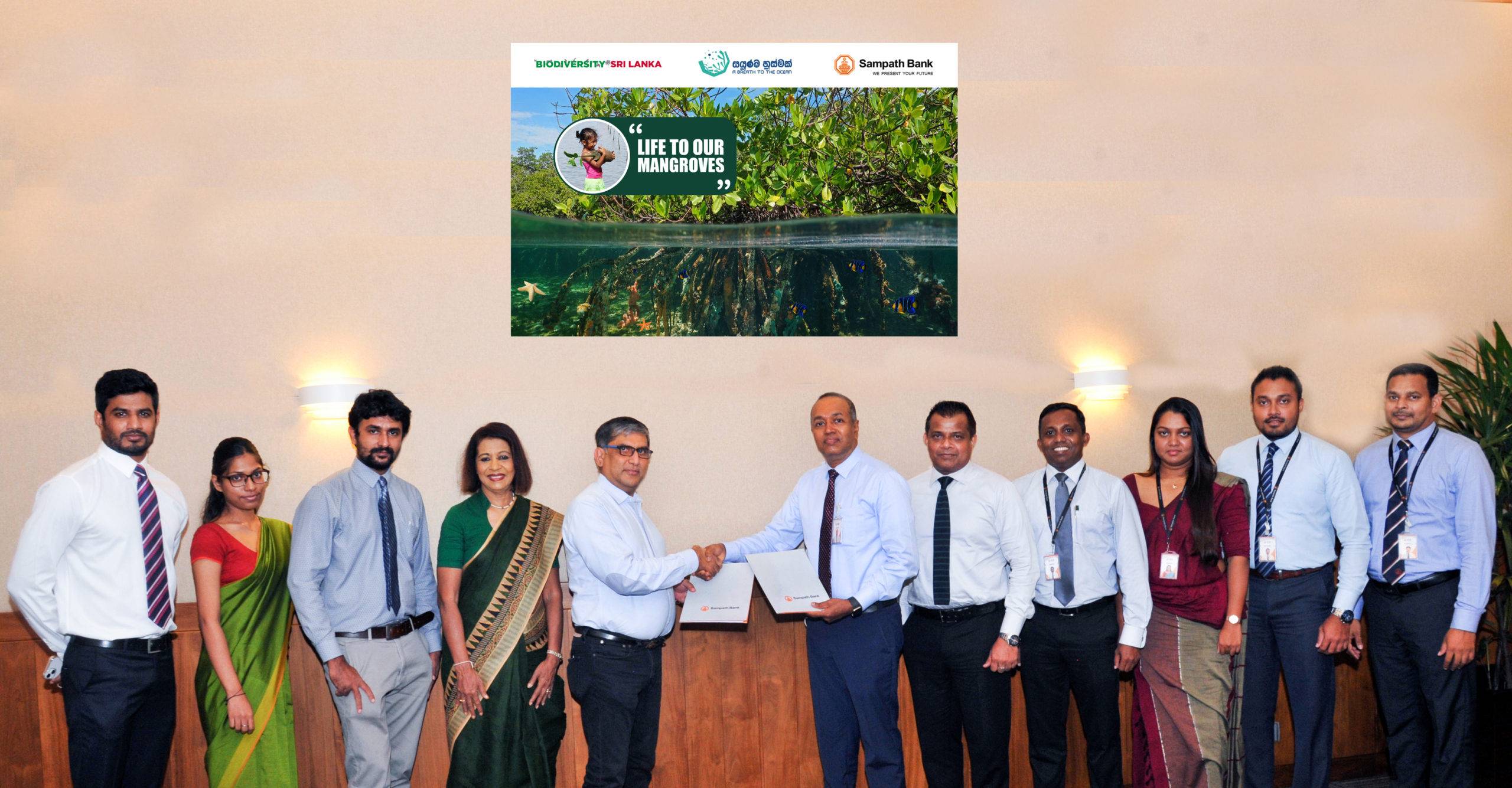
BSL signs a Partnership Agreement with its Patron Member – Sampath Bank LIFE TO OUR MANGROVES
Biodiversity Sri Lanka (BSL) and Sampath Bank PLC exchanged a Memorandum of Understanding to partner in the multi-partner mangrove restoration project as a Nature-based Solution (NbS) using a private-public partnership approach. The project is expected to generate multiple environmental as well as socio-economic benefits. Overall, the intervention will enhance the resilience of the mangrove ecosystem, its capacity for renewal, and the provision of ecosystem services, whilst contributing to the socio-economic development of local communities. The signing took place at the Sampath Bank Head Office by the Bank’s Group Chief Human Resources Officer Mr. Lalith Weragoda and Biodiversity Sri Lanka’s Director Mr. Shahid Sangani who is also the Managing Director of Dynawash Ltd.
On the 12th of December 2021, Biodiversity Sri Lanka and the Department of Wildlife Conservation (DWC) exchanged a Memorandum of Understanding (MoU) to implement this project. Mr. M. G. C. Sooriyabandara, Director-General of the Department of Wildlife Conservation, and Mr. Chandrarathna D Vithanage, Director of Biodiversity Sri Lanka, signed this document at the Department of Wildlife Conservation. The project ‘LIFE To Our Mangroves’ was officially launched on the 7th of February 2022 by Biodiversity Sri Lanka and its members.
Known as ‘the Lungs of the Sea’, mangrove ecosystems provide critical services for the maintenance and well-being of global biodiversity. They are also of equal importance to humans living in the tropical belt, in terms of the ecosystem services that they provide, and the options offered by them as livelihoods to the major proportion of populations that live in the coastal zones of the region. In the context of the single-most debilitating challenge that humankind faces currently, mangroves play a significant role in fighting climate change as unique and productive Carbon sinks, and by acting as a protective barrier for human settlements, against heightened natural disasters resulting from increased global temperatures. Therefore, there is the special and increased focus being laid on the conservation and wise use of mangrove ecosystems around the world.
Mangrove ecosystems cover a land area of 0.23% of the total land area of Sri Lanka. In order to prioritize the protection of these mangrove forests, and more so urgently – a national policy to conserve and sustainably utilize mangrove ecosystems in Sri Lanka, was approved by the Cabinet of Ministers in March 2020.
Anaiwilunda Wetland Sanctuary, which covers an area of 1,397 ha, consists of forest wetlands including mangroves, coastal saltwater ecosystems, and freshwater lakes. It is located along the coastal belt between Chilaw and Puttalam in the Northwestern Province of Sri Lanka. It is one of Sri Lanka’s six RAMSAR wetlands. The sanctuary provides shelter to a host of threatened fish, amphibians, mammals, reptiles, and many migratory birds.
From 44.5 ha of degraded mangrove forest patches within the sanctuary, the DWC has agreed to guide Biodiversity Sri Lanka in initially restoring up to 25 ha, using accepted scientific principles within a period of five years. BSL Members will play an active role in this effort. The first two years will focus on planning, forging community partnerships, land preparation, nursery establishment, and planting activities. Years three-five will be allocated for gap filling and maintenance. Activities will be guided by IUCN’s Global Nature-based Solutions Standard. Baseline monitoring for the entire site is being undertaken by the DWC and monitoring of the BSL site will be in keeping with this overall M&E process.
We look forward to a very fruitful partnership with the Bank!
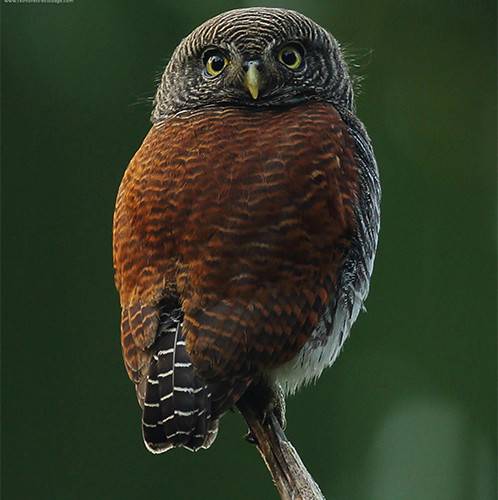
In commemoration of World Endangered Species Day
The third Friday in May every year is designated as Endangered Species Day. In commemoration, BSL hosted an educational session on endangered species for students from its Patron Member, Stafford International School Colombo. This event reminded us of how vulnerable some animals, plants, and insects are, and inspired us to learn more about why it is so vital to conserve them. This is a day when people talk about solutions and educate their families and friends about how they can help protect certain species. The session for senior students of the school was conducted by Professor Sampath Seneviratne from the Department of Zoology and Environmental Science of the University of Colombo a well-known Molecular Ecology, Evolution and Ornithology Research Scientist.
Several animals have come and gone or become extinct since life originated on Earth, owing to changing physical and biological conditions in the environment. Extinction, as we all know, is a continuous natural occurrence. However, scientific evidence suggests that the current pace of species loss is far faster than the historical rate. This is something we need to consider or is a cause for concern.
Sri Lanka, the pearl of the Indian Ocean has high species diversity, ranging from elephants and leopards to marine turtles and a vast number of birds. There is a big chance of seeing the mighty blue whale in our southern and eastern oceans. Even though Sri Lanka is famous for its wildlife there are a number of wild animal and plant species that are threatened with extinction because of human behavior. Sometimes these threatened flora and fauna go extinct and are lost forever.
Prof Sampath Seneviratne
The focus of the day’s program was on threatened and extinct species. Professor Seneviratne discussed the DNA distribution of certain extinct creatures, such as the clade Dinosauria – the common name given to a group of reptiles, often very large, that first appeared roughly 245 million years ago. Sri Lanka was a peninsula for most of the Indian geological history. Dinosaurs have been discovered on what was India’s northwest coast, present-day Gujarat and Madhya Pradesh. However, we did not discover Mesozoic rock in Sri Lanka because it has either been eroded away to reveal Precambrian rock or has been buried beneath layers of Cenozoic rock. The early human remains in Sri Lanka, for example, can be found in the Balangoda caves. The Mesozoic is represented only by two Jurassic Limestone patches in Puttalam. It is not impossible to find dinosaurs in coastal marine deposits, although none have been discovered so far.
(Picture Credit – The Rainforest Ecolodge – Sinharaja)
Referring to the present context, Professor Seneviratne mentioned that Sri Lanka has a higher number of endemic animal species, as well as one of the highest rates of biological endemism in the world. There are around 21 endemic mammals, 26 endemic birds, 113 endemic reptiles, 112 endemic amphibians, 50 endemic fish, and countless insect species in Sri Lanka, including 24 endemic butterflies such as Mycalesis Rama (Cingalese Bushbrown) and Elymnias Singhala (Ceylon Palm fly). The Sri Lankan junglefowl, Purple-faced langur, and the Sri Lanka Blue Magpie are some of the common endemic fauna, that can be observed in the country. The distribution of these animals across Sri Lanka varies depending on the country’s environmental variability. The Sinharaja World Heritage site is home to 21 of the 26 endemic bird species, making it one of the most endemism-rich ecosystems on the planet.







